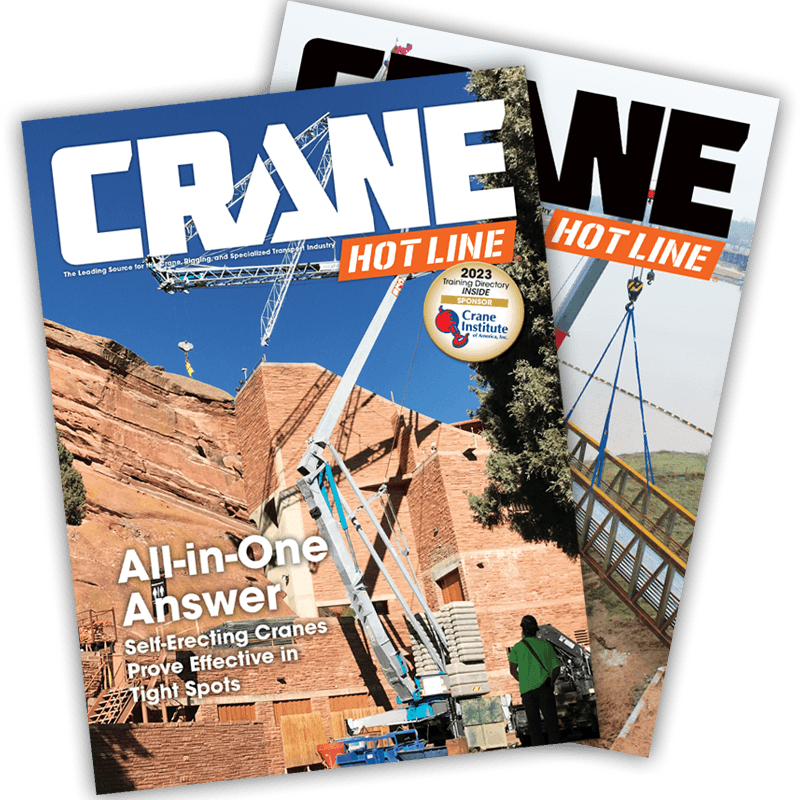Brush Up on Best Practices for Operating an Articulating Crane
Truck-mounted articulating cranes are valuable material handling tools. The ability of truck-crane units to efficiently transport, pick up and place a variety of heavy materials can have a significant impact on a contractor’s productivity and profitability.
The benefits of articulating cranes cannot be realized unless the equipment is operated efficiently and safely. Following are some best practices for articulating crane operation from Iowa Mold Tooling Co. Inc. (IMT), which manufactures a complete lineup of articulating cranes.
It is important to understand that these are general guidelines from one crane manufacturer; operators and service personnel should always carefully follow manuals for their specific crane when operating, inspecting and maintaining the equipment.
Put safety first and foremost
Articulating crane operators must be trained and experienced personnel. It is mandatory that operators thoroughly read and understand the operation and safety manuals for their specific crane before operating the equipment. In addition, operators should be familiar with all applicable government regulations and safety codes.
Be diligent about daily inspections
Daily inspections are critical to efficient and safe operation of articulating cranes. All of the manufacturer’s recommended inspections and checks should be performed. If maintenance items are noticed, the crane should be removed from service until the necessary replacement or repair is completed.
Set up for success
Lift safety depends heavily on work site preparation, so all lifts must be carefully planned.
The truck-crane unit should be positioned with the rated capacity of the crane and the weight of the load to be lifted in mind. Operators should determine the weight of the load to be lifted — the weight of the load plus the weight of any load-handling devices — and use the crane capacity chart to ensure that all lifts are performed within the rated capacity of the crane.
To avoid instability, the truck-crane unit should be parked in the most level spot near the load — within 5 degrees of level per ANSI standards — on ground that is sufficiently firm to absorb pressure from the stabilizer legs. If the ground is too soft, stabilizer legs should be reinforced.
If work near power lines cannot be avoided, IMT recommends keeping the crane at least 30 feet from any power line or apparatus. In windy conditions, additional clearance should be allowed. If a lift is impossible to perform within the minimum distance between electrical source and crane, the power line or apparatus should be de-energized before the lift is attempted. A qualified signal person or spotter should be used when working near electrical sources.
Operators should ensure that bystanders are at least 30 feet from the truck-crane unit and the working area of the crane.
Operate safely and soundly
IMT offers the following instructions for properly setting up a load and performing a lift.
Load setup
- Deploy stabilizers and unfold the boom system according to the crane manufacturer’s instructions.
- Carefully attach proper lifting gear to the load.
- Secure all unnecessary manual boom extensions, if applicable.
- Eliminate swing by positioning the boom tip directly over the center of the load before lifting.
- Check the safety of the load by first lifting the load barely off the ground.
Lift performance
- Do not exceed the rated capacity indicated on the lifting capacity chart. The load moment is highest when the boom is slightly above horizontal.
- Use caution when operating in reduced-stability areas.
- Do not operate the stabilizers when the loader is working.
- Operate the control valves smoothly. Avoid jerking the valves or the load.
- Use any extension booms in their proper sequence — largest to smallest.
- Do not stand directly in line with the boom travel when releasing manual extension boom pins, to avoid injury if the boom slides unexpectedly.
- Know the position of the booms at all times while operating the crane.
- Never drag a load or bounce the boom.
- Never leave the crane when it is loaded, or walk under a suspended load.
- When lifting, keep the load as close to the ground as possible.
- Stop all crane operation at a signal from anyone.
- When rotating the crane, the load may change from being supported by the stabilizers to the truck suspension. Use caution when rotating the crane, because springs on the truck will respond differently to the load than the tires will.
- When a cylinder is in its most extreme position, the control valve lever must be immediately released to the neutral position to prevent the oil from overheating.
After the lift
Following the lift, extensions and stabilizers should be retracted and the articulating crane stowed — according to crane manufacturer instructions — until its next use.
In addition to daily inspections and checks, weekly, monthly and yearly service intervals in the crane manual also should be followed. Proper inspection and maintenance of the crane will lead to a long, productive life for the equipment.


